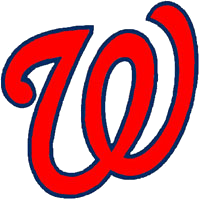The 2014 baseball season is one that Washington Nationals Ryan Zimmerman would soon just forget. And it would be difficult to blame him.
Injuries limited Zim to just 61 games. To add insult to injury, while sidelined, Zimmerman watched replacement Anthony Rendon emerge into one of the National League’s premier third basemen. While Rendon helped Washington run away from the rest of the NL East field, it created a quandary for Washington’s front office. Where exactly does Zimmerman, once considered the cornerstone of the franchise, fit in?
General Manager Mike Rizzo made a bold and decisive decision by allowing first baseman Adam LaRoche to depart via free agency during the offseason. LaRoche’s exit allowed Zimmerman the opportunity to move across the infield to anchor first base. Simple, right? Not quite. The shift from third to first is considered one of the more difficult positon changes in the game. Range, throwing motion, and footwork all are critical and intangible components necessary when making a successful switch from the left to the right side of the infield. Would Zimmerman, who has been battling injuries the past several seasons, have enough left in his tank to pull off the feat?
So far this spring Zimmerman is saying all the right things. “I think the move as a whole is what’s best for the team,” he said when he recently spoke to the Washington Post. “That’s the goal, to improve the overall team, and that is the approach I’m taking,” noted Zimmerman.
From the defensive skills aspect, Zimmerman has proven that he is up to the task. In his 10-year career he has been an above average defensive third baseman, winning a Gold Glove at the position during the 2009 campaign. During his injury-plagued 2014 season, Zimmerman played 18 innings at first base and committed one error, while displaying what was labeled as “adequate” range for a first basemen. So while still relatively young (30) and possessing a positive attitude regarding the switch, there’s plenty of optimism around the Capital that the switch will be successful.
The downside of the move for Zimmerman is straightforward. His team, the Nationals, play in the National League, where the designated hitter rule does not apply. So if the switch doesn’t work, there’s no wiggle room for the University of Virginia alum. This could prompt a midseason trade to a designated-hitter friendly American League club that would accommodate Zimmerman’s bat, if not his glove. An AL team like the Baltimore Orioles, who may be in search of a capable DH to fill the void of Nelson Cruz (44 homers in 2014), who left for the blue skies of Seattle.
Either way this should be an interesting summer for Zimmerman, who may be facing more than just a position change.











